Recognising fish
How many fish are there in the sea? No-one knows. OK, how many species of fish are there? No-one knows that either.
Let's start again. "The oceans cover 70% of the surface of our planet, and yet they are the least explored," says David Attenborough in the opening of theTV series Blue Planet II. "Hidden beneath the waves, there are creatures beyond our imagination."
There are a lot of fish down there, and we have only recently started trying to work out what they all are.The World Register of Marine Species started in 2007 with 120,000 marine species on its list. Ten years later, it had doubled, to 242,000. Of that number, about 30,000 species of fish have been listed by Fishbase.
Maybe 4,000 fish species live on coral reefs: and there are thousands of other species. Coral reefs occupy less than one percent of world oceans, but they provide a home for 25 per cent of marine species. Reefs are a good place to practise recognising fish.
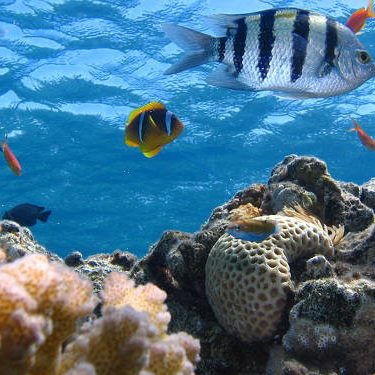
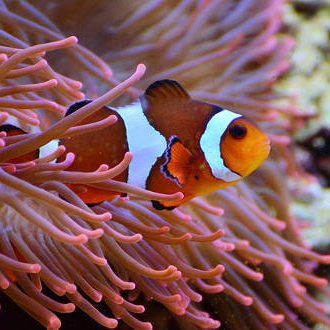
If you're lucky, when you go in the sea there will be hundreds of fish. In tropical waters, they will be exploding with life and colour. If you learn how to recognise some of them, it helps you observe their behaviour - and it gives you a little more understanding of what happens under the sea.
So, how do you start to recognise fish? The first thing to do is to be kind to yourself: limit your workload, especially at the beginning.
When you first see a lot of fish, have a look to see if there is one you recognise. If you know nothing about fish, and you're lucky, you might see a clownfish - or, to use its technical name, a Nemo. You wouldn't believe the number of times we have heard new snorkellers shriek with delight. "I saw a Nemo!"
Next chance you get, google it. You'll find that clownfish live in sea anemones, which are poisonous to other fish but not to Nemo, because he has a layer of mucus on his skin: that he picks out parasites off the anemone, and is very territorial, fighting off fish which might nibble at the anemone: that he lives in harems, but can change his sex from male to female if necessary: and that he has an agent and works for Disney.
The thing is, that once you've learned a bit about the fish, it will stick in your memory. Next time you see a Nemo, you'll remember it's a clownfish, and the strange way it behaves, and you'll be ready to find another fish to look at. Have a look around, and see if you can find another one that is easy to remember.
Could we suggest the sergeant major? Also known as the sergeant, occurs in various shades in different places, but is recognisable because of the sergeant's stripes. You'll find him all over the Atlantic, from the Caribbean to Cape Verde. Round body, forked tail, sergeant's stripes. There's one on the right - but also in the photo at the top. "Morning, sergeant!"
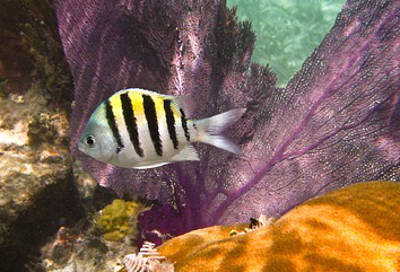
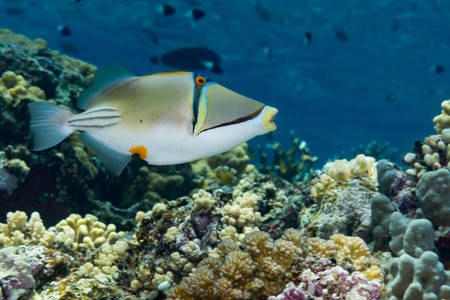
And this actually happened to us. We came spluttering up to the top, looked at each other, and said "Did you see that weird-looking fish? Looked just like a Picasso painting." Back at the hotel, we checked it up, and found it was called ... a Picasso fish. You find them in the Red Sea, the Indian Ocean, and they're as weird as anything.
You get the idea - when you're new at this, take it easy. Find a big fish, or a weird one, or one that you like the look of. Remember what it looks like, and check it up when you get ashore. Local sheets or books are the best - check out Guides and Books. As you get better at it, you'll find there are things to look for - body shapes, number of fins, habitat. But don't let that bother you for now. Do one fish at a time. Snorkelling's supposed to be fun...
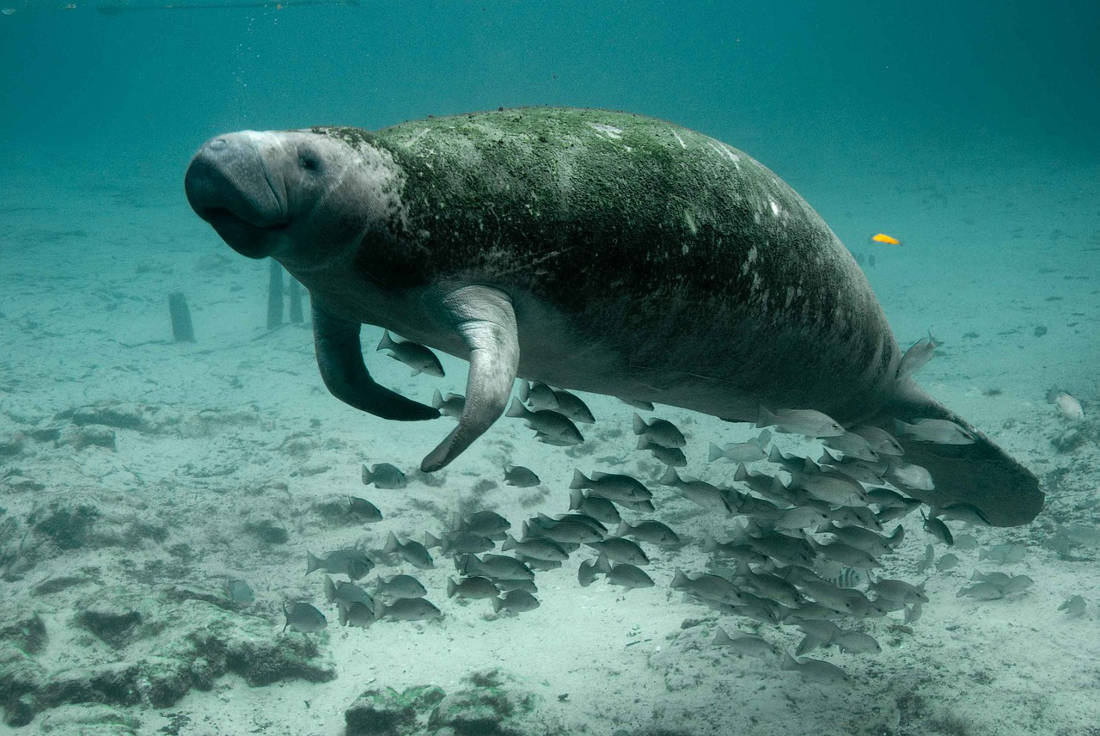
We wrote a diary of how we learned to recognise fish. There are no earth-shattering secrets - just plodding away, and enjoying the snorkelling. We wrote this in 2014.
Fish watching
We have learnt to be happy with what we see. Sometimes, we do manage to call the other one over to look at something exciting but quite often we don't, and then there's the thousands of sea-dwellers that neither of us catch sight of, for example, a four-metre long dugong which was spotted by our friends - but which we missed..
We have learned to be even happier with the limited number of identifiable underwater photographs that we take (see also, Cameras). We are not particularly good photographers, even in air, so our photos are more an aid to help us remember and identify fish, sea creatures and coral.
We happily snap away in the hope that the fish will come close, obligingly turn in the right sunlit direction and then pose long enough to stay in focus, whilst simultaneously, we have to stop bobblng about in the waves and remember to keep our fingers away from the lens. Only the latter seems to be within our control, but not always.
At the start, we would come back from an hour of snorkelling and draw or make notes of what we could remember. Then we would try and find them in simple laminated fish guides to the area. We've had to revert to this method on a few occasions when underwater cameras have failed.
It's no bad thing, you have to limit the number of fish to remember and really study those for shape and colouring if it's willing to stay still for a while.
We're just as happy fish-watching in the Mediterranean as in the Caribbean. The colours aren't as bright but we've floated for ages studying an octopus make its way across the rocks or two sooty Sea Hares (Aplysia fasciata) at a beach west of St. Tropez.
Size doesn't really matter to us either. Some divers have done the stereotypical action of holding their hands wide saying "I saw a big fish", we would rather see a smaller fish and be able to find out what it is. We love the tiny, tiny electric blue fish (juvenile damsel fish?) that we find everywhere and were really excited to get quite a good picture of a small Christmas Tree worm (Spirobranchus giganteus). Underwater photography is so much easier when the subject remains stationary.
We're learning slowly, have bought many books and guides, and some apps (lighter for travelling, but so far rather limited) and love free wifi when abroad so we can do internet searches.
We've learnt that there's a surprising amount of cross-over around the world, colours vary but fish identification at our level is still possible. An anemone fish in the Red Sea looks similar to an anenome fish on the Great Barrier Reef. Sergeant Majors seem to be everywhere (in the Atlantic).
If we're lucky we can rectify our mistakes with a bit of research. We thought we had seen a great number of cuttlefish at Trouva Bay in St. Lucia, only to find out that same day that there are no cuttlefish in the Caribbean and what we saw were Caribbean Reef Squid. Forget the misidentification, we were delighted to learn more and seen something new.
There are some fish that still remain unidentified despite searching. One springs to mind which we spotted at the very last minute of our last snorkel in Oman. It was long and darkish like a small barracuda with bright yellow pom-poms behind its tail. Can anyone help? We might be able to pick it out of a line-up.
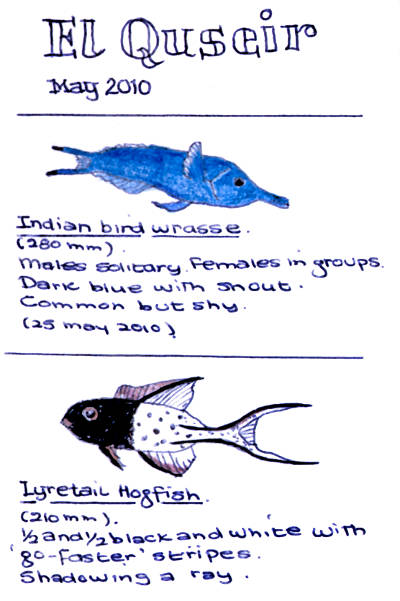
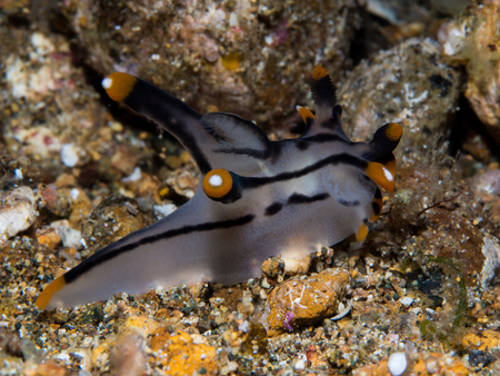
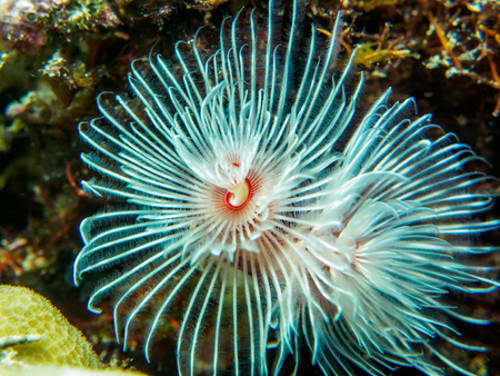
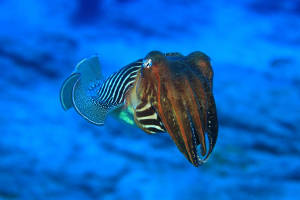


Usual warning: we have made very effort to make sure this information is correct and up-to-date, but you need to check it all yourself.
© Garreg Lwyd Ltd 2018
